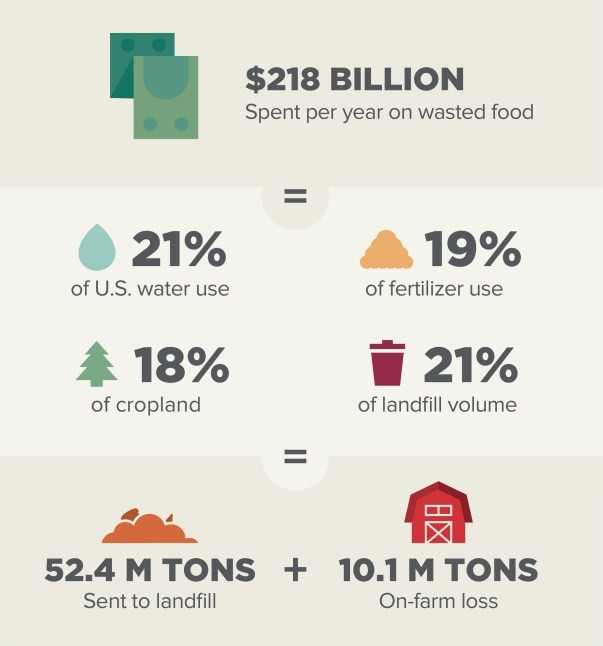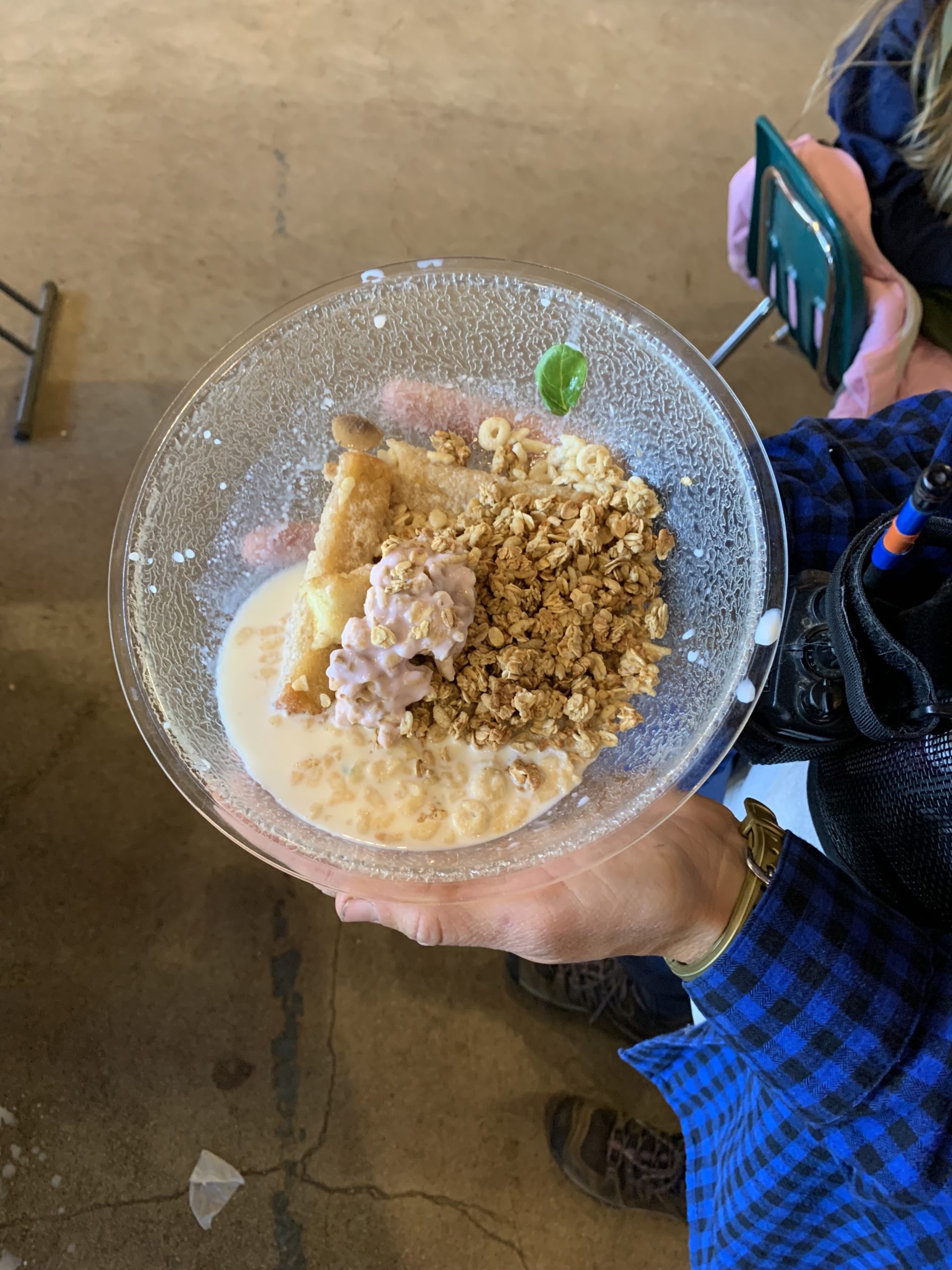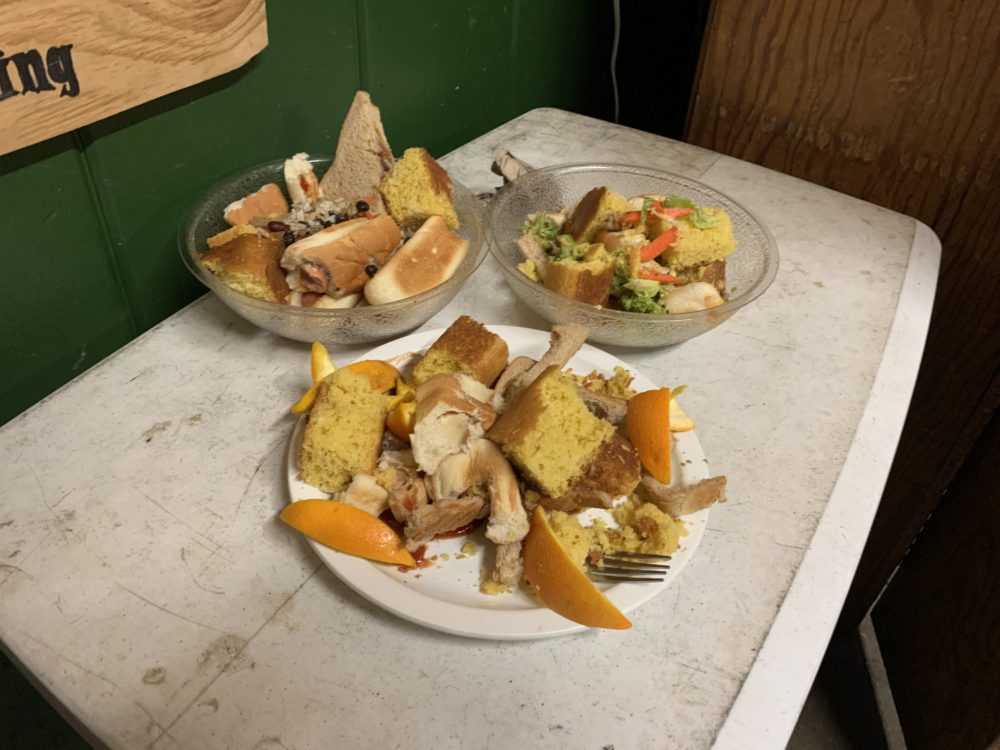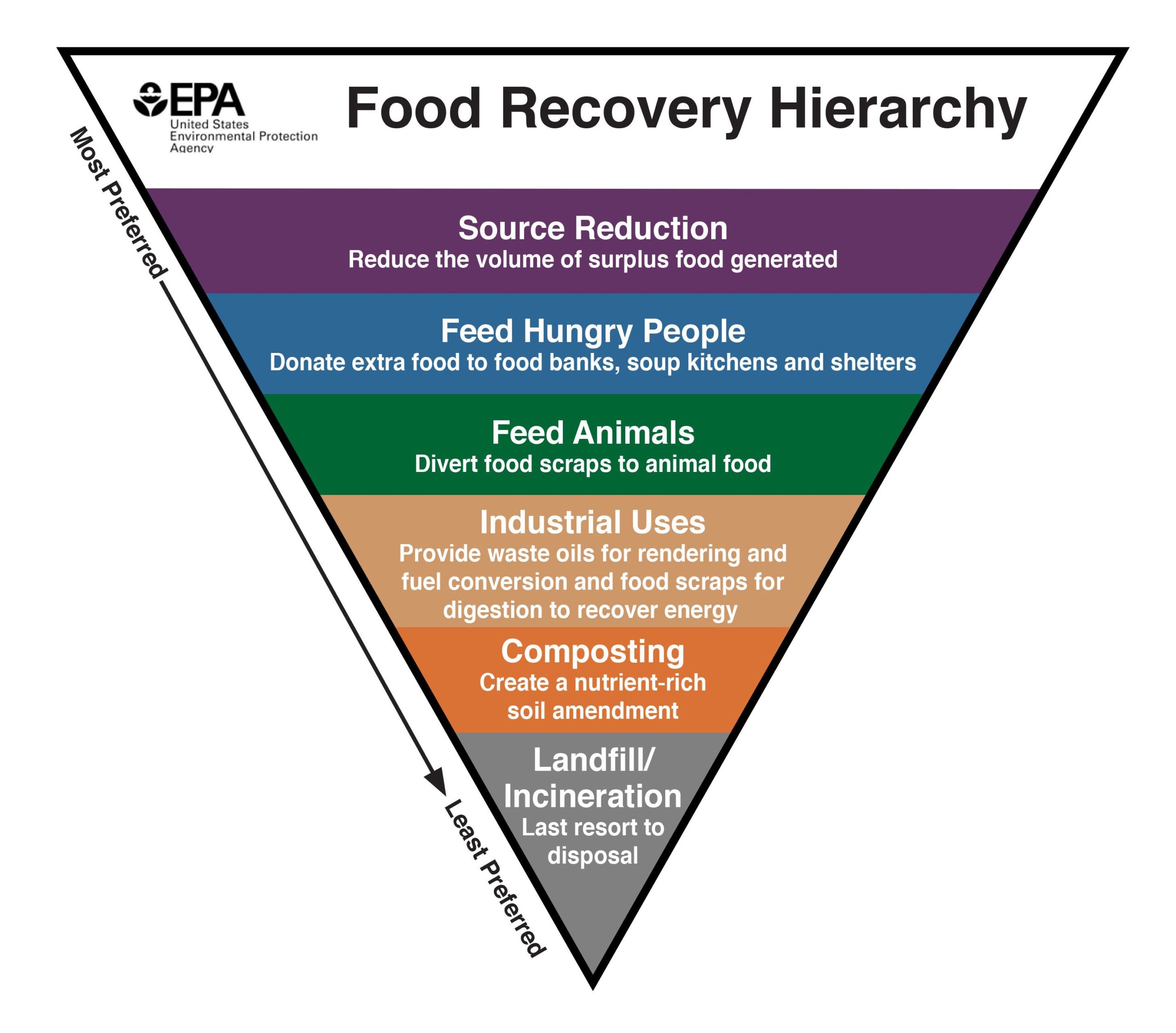Food waste is one of the most important things students learn about here at High Trails, but it is also easy to overlook. While most people don’t consider it to be a big deal, as a country, the US wastes about 80 billion pounds of food each year (RTS, 2022). That’s about 219 pounds per person, most of which goes straight to the landfill. Not only does this have disastrous environmental effects, but that much food waste is also insane for a country that had 10.5% of its households, 35 million people, identify as food insecure, being without reliable access to affordable, nutritious food, in 2020 (USDA ERS, 2021). Food waste and food insecurity are a crisis in this country and will only continue to get worse unless something is done about it.

From: https://www.prescouter.com/2019/03/profitable-sustainability-10-companies-making-food-waste-edible-again/
Food Waste at High Trails
Here at High Trails, we set a food waste goal for each meal, gradually reducing it until it hits zero pounds of food waste at breakfast on the last day of the program. Food waste from each meal is collected and shown to students at the end, giving them a visual of the food waste they created. Even when food waste is set to the highest goal (5 pounds for about 100 people), this would still only be 55 pounds generated per person per year, which is less than a quarter of the current US average.


Students also take part in the Milk Skit during Opening Night Campfire which highlights just how many resources and people are involved in getting food up to High Trails. For milk alone, there are roughly 14 steps to getting it from the cow on the farm all the way to site! Through these experiences, High Trails helps students to build effective habits for reducing food waste and encourages them to take more responsibility and ownership over preventing food waste.
US Food Waste
In total, between 30-40% of the entire US food supply is wasted every single year (RTS, 2022). This food waste stems from a lot of different sources, but most come from homes and restaurants. Usually, people associate this with either uneaten or spoiled food being tossed out, but it also comes from consumer preferences and the inaccuracy of most expiration dates. Each year around 40% of perfectly good produce never makes it to a market just because it’s not aesthetically pleasing (Kateman, 2020).

https://www.ams.usda.gov/grades-standards/fruits
This preference for buying the perfect-looking fruit or vegetable runs so deep that the USDA mandates the appearance of produce being sold in stores. What’s more, the vast majority of the time this imperfect produce goes straight to the landfill because it’s much cheaper for producers to throw it away than try to donate it due to the logistics of donation. Additionally, there is little regulation and a lot of confusion over sell-by dates on food. This date is determined by the manufacturer as their best guess of when they think the food will be the freshest and is not regulated whatsoever by the government. Confusion over these dates leads to a lot of perfectly good food being thrown away by both individuals and supermarkets because it is perceived to have gone bad. Altogether these factors make the US the world’s leading country in food waste. Fortunately, there are solutions, but they will need to be implemented soon in order to prevent catastrophic environmental effects.
Environmental Impact
The lifespan of food waste, from production to landfill takes a heavy toll on the environment. Food waste is the largest single component in landfills, making up 24.1% of all municipal solid waste (Cooper, 2021). Once in the landfill, it is anaerobically broken down by the microorganisms in the soil releasing methane, a greenhouse gas 21 times more potent than CO2.

These greenhouse gasses are released into the atmosphere where they trap heat causing global warming and climate change. Halving food waste in the US is estimated to reduce greenhouse gas emissions by around 14% (Jalgo et al, 2021), which would be a crucial step towards meeting the goals of the Paris climate agreement, an international climate change treaty to limit global warming. Additionally, 25% of the available fresh water in the US is used to produce food that is later thrown out and the energy used would be enough to supply more than 50 million homes for a year (EPA, 2021). In total, food production significantly contributes to greenhouse gas emissions, land usage, water use, and pollution, all of which are driving forces behind climate change. As a whole, food production also contributes towards the degradation of soil and water quality, deforestation, and the loss of biodiversity, making it even more critical that we limit the food waste we produce.
Solutions
Solving the issue of food waste in America starts with individuals. Buy that ugly-looking fruit or vegetable, use your best judgment to determine if something is expired instead of trusting the expiration date, and aim to have zero food waste after every meal. Other practices like making a grocery list before going to the store, freezing things if they won’t be used right away, and donating unwanted (but still good) food to food banks help to reduce individual food waste. On a larger scale, the EPA created the Food Recovery Hierarchy to show what actions to prioritize to prevent and divert food waste most effectively.

https://www.epa.gov/sustainable-management-food/food-recovery-hierarchy
Strategies near the top, such as source reduction and feeding hungry people, are preferred because they prevent the most food waste while also providing social and economic benefits. Additionally, in 2022 the state of California passed new laws requiring residents to compost their food scraps and large food distributors to donate edible food that would otherwise be thrown away (Blodgett, 2022). Other nationwide laws such as permanent tax breaks for producers and restaurants that donate unwanted food or adding regulations for expiration dates could be implemented to help the US reduce its food waste. Food waste is a huge problem in America, leading to horrible environmental consequences and huge inefficiency in our food production and distribution systems. There is not one easy solution to this problem, but we can be more conscious about preventing our individual food waste and we can come together to implement policies to reduce food waste across the country.
Blodgett, A. T. (2022, January 2). New California law requires food to be donated, not tossed. cbs8.com. Retrieved February 1, 2022, from https://www.cbs8.com/article/news/local/new-california-law-looks-curb-food-waste/509-fdfeff2e-a34a-40d9-a198-fa75336f5e53
Cooper, R. (2021, October 26). Food waste in America: Facts and statistics. Rubicon. Retrieved February 1, 2022, from https://www.rubicon.com/blog/food-waste-facts/
Environmental Protection Agency. (n.d.). From Farm to Kitchen: The Environmental Impacts of U.S. Food Waste. EPA. Retrieved February 1, 2022, from https://www.epa.gov/land-research/farm-kitchen-environmental-impacts-us-food-waste
Food Security and nutrition assistance. USDA ERS – Food Security and Nutrition Assistance. (2021, November 8). Retrieved February 1, 2022, from https://www.ers.usda.gov/data-products/ag-and-food-statistics-charting-the-essentials/food-security-and-nutrition-assistance/
Food waste in America in 2022: Statistics & Facts: RTS. Recycle Track Systems. (n.d.). Retrieved February 1, 2022, from https://www.rts.com/resources/guides/food-waste-america/
Jaglo, K., Kenny, S., & Stephenson, J. (2021, November). From Farm to Kitchen: The Environmental Impact of U.S. Food Waste. U.S. Environmental Protection Agency.
Kateman, B. (2020, March 2). The time is ripe for ugly fruits and vegetables. Forbes. Retrieved February 1, 2022, from https://www.forbes.com/sites/briankateman/2020/03/02/the-time-is-ripe-for-ugly-fruits-and-vegetables/?sh=58c644e4a851

At High Trails Outdoor Science School, we literally force our instructors to write about elementary outdoor education, teaching outside, learning outside, our dirty classroom (the forest…gosh), environmental science, outdoor science, and all other tree-hugging student and kid loving things that keep us engaged, passionate, driven, loving our job, digging our life, and spreading the word to anyone whose attention we can hold for long enough actually to make it through reading this entire sentence. Whew…. www.dirtyclassroom.com

Comments are closed.